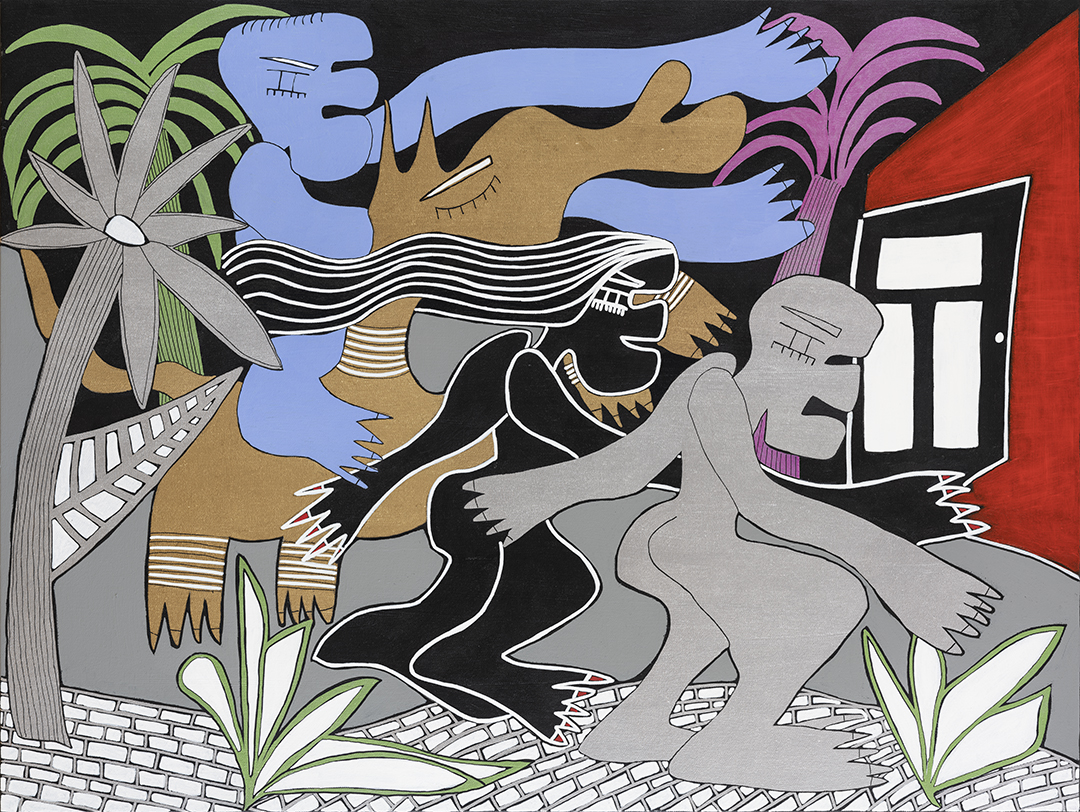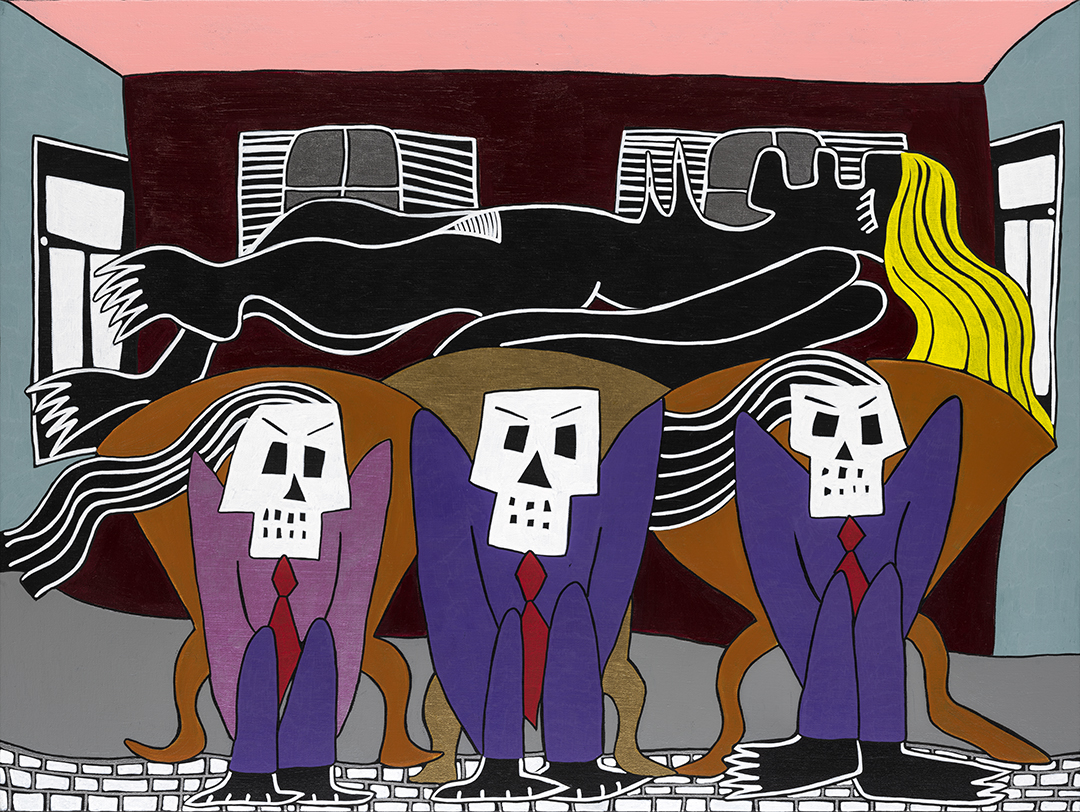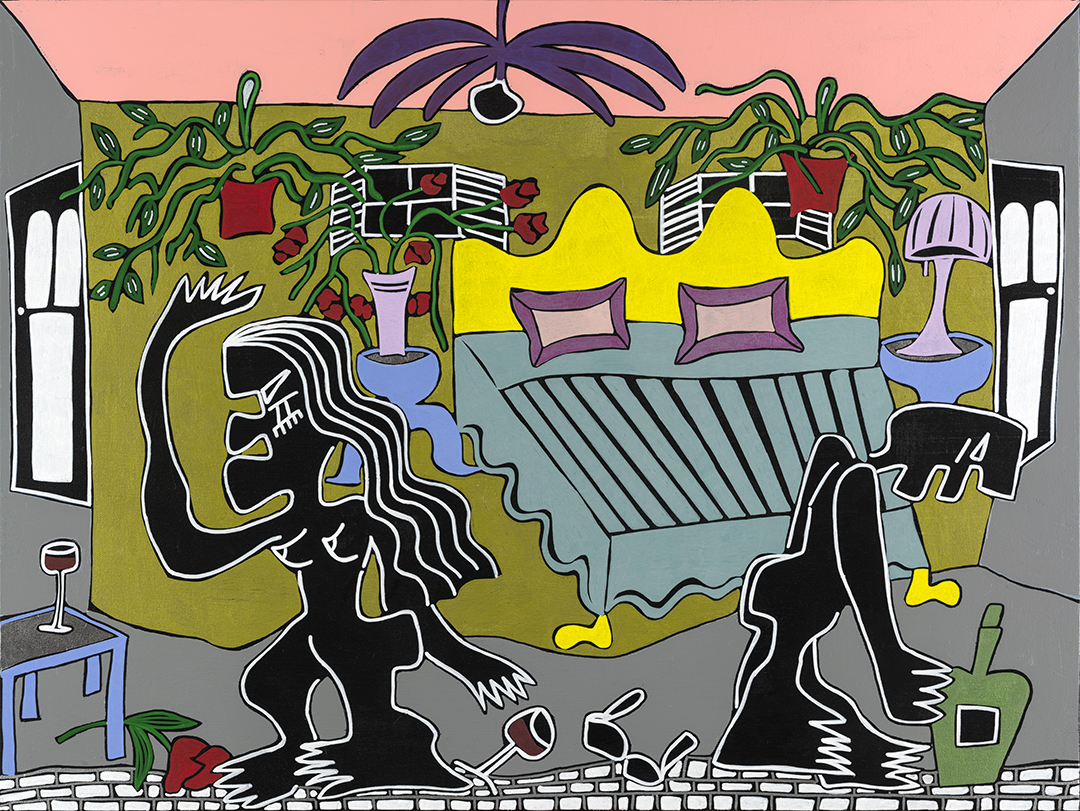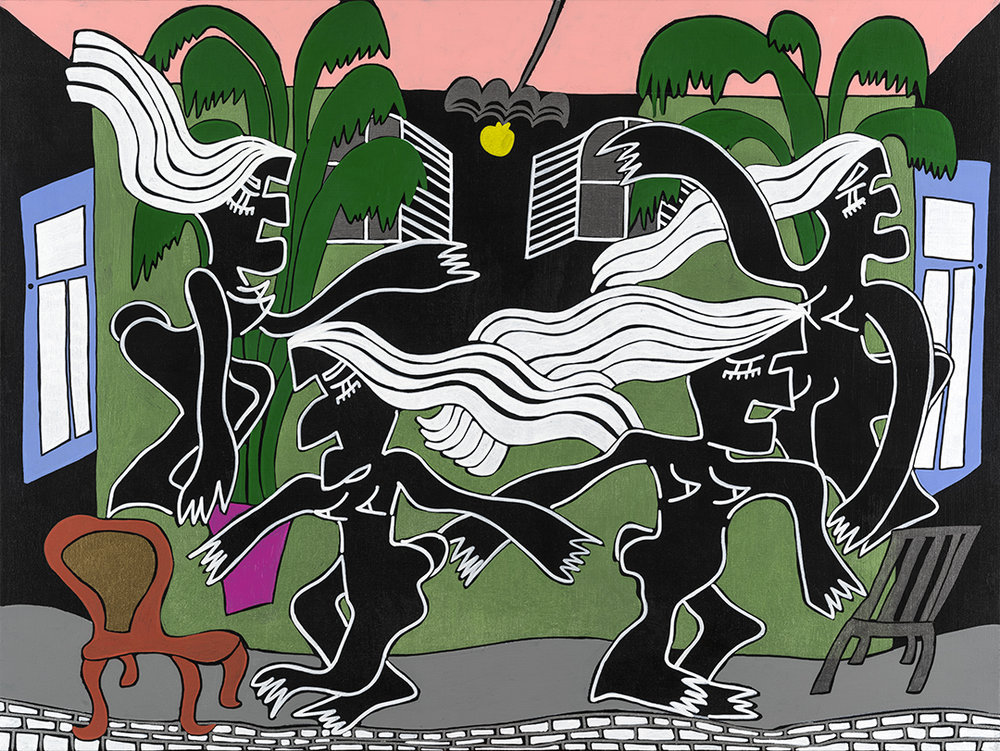Theodosia Marchant: Domestic Animals
LA-based artist Theodosia Marchant paints a narrative of human nature in 16 frames in her solo show Domestic Animals. The collection is Marchant’s personal experiment on human behavior, combining her signature figures + love of psychology. The sequential series takes us through the different stages of life + coexisting, with each painting depicting a universal situation that comes along with being human. Marchant flawlessly conveys emotion through the creation of visually different rooms, color palettes + the gestures of her characters. We’re completely captivated by the experiment, her abstract style + her expressive figures. We chatted with her all about the inspiration behind the series + her conclusion about human behavior. See all 16 paintings on display at Fathom Gallery through Saturday, June 15.
Asymmetric Magazine: Congrats on your solo show Domestic Animals. Can you tell us all about this series?
Theodosia Marchant: I’m fascinated by psychology, and I read an article that really intrigued me. It was analyzing the idea that we are constrained by chemistry and that there is no free will. It talked about how free will is just the making of our unconscious, and we can’t control it. It’s just an illusion; it doesn’t exist. We are acting well before we actually think that we act. I was so inspired, and I thought, ‘If we can’t control emotions, then what makes us? How do we act? What defines us?’. So, I wanted to create a house with different rooms. I wanted to put my figures—my humans—in a controlled environment and use this theory to see how they act. As the series progressed, it became my own personal experiment in human nature. I wanted to see how human relationships develop—how they start and how we end up. After ending the experiment, I’ve concluded—like many others have—that we, as humans, do want to be with each other. We have our differences, but at the end of the day, we want to be together and end up working it out through all the stages of life.
If we can’t control emotions, then what makes us?
AM: Over what time frame did you create this series?
TM: I started the series in June of 2018 and finished in January 2019.
AM: As you did this experiment, did you have the 16 points of the story in mind before or did they come along as you progressed?
TM: It developed in the process. As I was painting, the different stages and next levels came about. It’s really interesting because it became a study of human behavior, and each piece was inspired by the scene and human interaction in the piece before it.
AM: Do you have a piece out of the series that you resonate with most?
TM: I love all 16 frames, but the first piece in the series Reach For The Door speaks to me because it’s all about taking risks. The door represents the risk, and I’ve always liked taking risks in my life. I moved to LA from the UK, and I gave up everything to come here and start fresh. Also, Undiscovered Country is a really positive piece in the series for me. It shows that we all like to be part of a group and long to identify with someone. As humans, we do actually like each other, and we are programmed to get along. Another really personal one for me is Goodbye To A Soul about death. Some of these paintings have come from personal experiences in my life and the things we all go through, and that’s one of them. Sisters Of Darkness is another very personal piece. It’s about how I’ve distanced myself from certain people in my life due to differences in opinions and views, and we grew apart.
Sisters Of Darkness
AM: Where did your fascination with psychology begin?
TM: I’ve been fascinated with it forever. I remember being in school, and I used to read psychology books and articles, and I was really interested in learning about human behavior. On a personal level, I feel that I’m really good at reading people and how they feel. I love to observe how people act and react in different situations.
AM: A lot of your previous work is done in black and white. What inspired the use of color in this series?
TM: When I first started making art in general, I thought I’d always work in black and white. When I started this series, I started with a really controlled color palette in Reach For The Door. I didn’t think it would deviate beyond that, but as my ideas progressed, I didn’t want to restrict myself. The addition of color became really intriguing to me and helps tell the story of the different rooms and scenes I’ve created. I don’t think I would’ve been able to communicate the same message with limited colors. The creation of visibly different rooms is the key to this story. For instance, in Undiscovered Country, I wanted to create a warm living room, whereas in Stillness, where the woman is alone, I wanted to create a calming effect. The Instigator has purples and reds that are very intense, as she is portrayed as a bad person.
The Instigator
AM: We love that the colors of the pieces convey another layer of emotion. Let’s talk about the figures. You use these characters in a lot of your work. How did they come about?
TM: My work used to be way more abstract, but I’ve always had a fascination with figures in artwork. It was a progression, and I started creating abstract versions of humans that ultimately led to the figures in this series. Some have rounder or sharper features depending on the emotion or situation I wanted to portray. I also express their feelings through their gestures.
AM: We always love to ask: What music are you currently listening to?
TM: I love everything! Blues, jazz, indie and classical.
AM: What can we expect to see from you next?
TM: I’m excited to plan my next series. This series is the first really coherent story that I’ve done. I don’t know what my next series will be yet, but I definitely want to do another linear story.
Domestic Animals is on view at Fathom Gallery through Saturday, June 15 // more info
// photos courtesy of Fathom Gallery
// view more of Theodosia’s work at theodosia-marchant.com.










